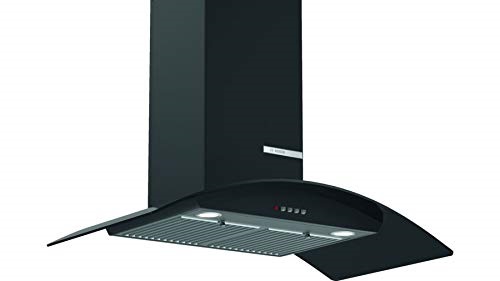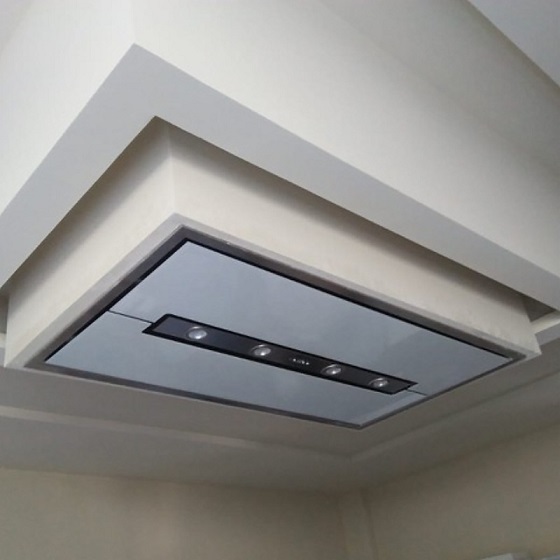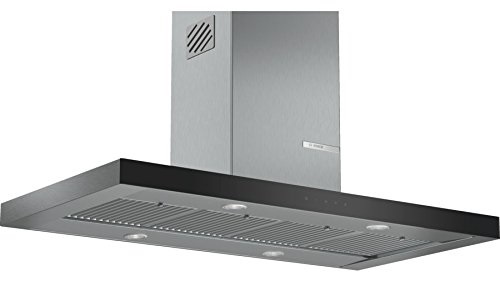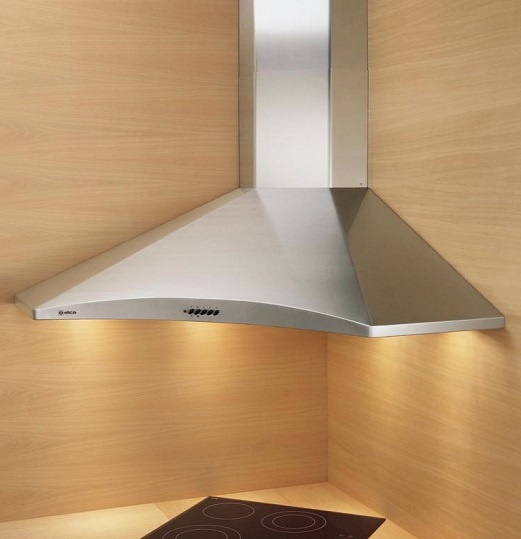Kitchen chimneys are available in different types, designs, strengths, and materials. Choosing one from them is nothing less than a complicated task.
To make it easier for you, we penned down the different chimneys, their specific characteristics in this article.
Keep reading further to choose the right model that meets all the ventilation needs in your kitchen while elevating your kitchen’s beauty.
Types Of Kitchen Chimney
Purchasing the right type of kitchen chimney is dependent on several factors like your kitchen structure, the location where you are planning to fix it, the kitchen platform, the stove size, the hob, etc.
Based on the location and where you can fit a chimney in the kitchen, you can classify a kitchen chimney into the following categories.
- Wall-mounted Chimney
- Built-in Chimney
- Island Chimney
- Corner Mounted Chimney
Each type has specific features that are unique for every kitchen layout. Let us discuss their technicalities and specifications in detail.
1. Wall-mounted Chimney
As the name specifies, the wall-mounted chimney is a ventilation device fixed or mounted on the wall right above the stove. Mostly available in a pyramid-shaped design, this appliance vents out the smoke, fumes, moisture, and odour from your kitchen instantly through the exterior wall behind.
A wall-mounted kitchen chimney elevates the aesthetic appeal of your kitchen by giving it a modern look. We all know that the Indian kitchens have platforms built adjacent to their walls. This makes a wall-mounted device perfect for the Indian kitchen, hence becoming very popular. Moreover, you do not need any extra support to hold the appliance.
The other significant feature is that it preserves your kitchen space. Does your kitchen already have a cabinet above the stove? Do not worry! You can still install the chimney right above the cooking space by simply removing the cabinet.
2. Built-in Chimney
Also known as a cabinet chimney, this device is ideal for smaller kitchens. You can install a built-in hood within the existing cabinet or woodwork of your kitchen. They allow great customization to the kitchen by their built-in feature. You can have a chimney that matches the kitchen layout and easily blends with your décor.
Although it is not a complete ventilation system like its other counterparts, it has the basic features, like the others. Moreover, it saves your kitchen space, becoming the best suitable option for compact designed kitchens.
3. Island Chimney
Island chimney also called a ceiling chimney, is a ventilation device, which lies suspended from the ceiling. This kind of chimney is specially designed for stoves located at the center of the kitchen space.
An island chimney comes with an exhaust pipe or duct through the ceiling that vents out the smoke, pollutants, and other particles from the kitchen. This appliance will add a more stunning look to your kitchen. However, you need to be careful about the height measurements during installation. The higher the ceiling, the longer duct your chimney requires.
You should install your ceiling chimney right above the cooktop surface. Make certain that it is at least six inches wider than your stove to ensure the fumes do not escape from the sides.
Now, you may say that your home does not have a proper clearance to vent out the air pollutants through the ceiling? In such a case, you need ductwork installation, which will cost you extra money.
Unlike the wall-mounted device, a corner chimney comes fitted in the corner of the kitchen where the cooking top, the hob is usually located at the corner against the wall. The kitchen chimney comes in both ducted and ductless types. While in ducted ones, the stale sir collected from the chimney gets released into the outdoors through a duct. Whereas in a ductless type, the air gets purified after passing through the charcoal filters. This filtered air again gets circulated inside the kitchen. Let us discuss further the other significant features of both types of kitchen chimneys that will determine which is the better option: Ductless chimneys are easy to install because they do not require any ductwork. Moreover, you can install them anywhere in your kitchen, based on the location of your cooktop. On the other hand, a ducted chimney requires huge space for installation and also needs ductwork for the same. Winner: Ductless Chimney A ducted chimney can efficiently remove the steam and fumes from the kitchen, further preventing the condensation build-up. The ductless devices are very effective when it comes to removing odours. To put it simpler, a ductless model cannot pull out steam or prevent condensation build-up. Winner: Ducted Chimney When it comes to removing heat and moisture from the kitchen, a ducted chimney does the job effectively. Not only that, but it also keeps your cooking space cool and dry. Whereas, a ductless device can only filter the particles efficiently out of the kitchen. Winner: Ducted Chimney When compared to ducted chimneys, ductless chimneys make more noise. Winner: Ducted Chimney While the ducted ones have a baffle or cassette filters, ductless ones have a charcoal filter in conjunction with baffle or cassette. Both ducted and ductless chimney filters need cleaning the filters on a regular basis. However, the ductless filters (charcoal) require frequent replacement and hence can be difficult to maintain. Winner: Ducted Chimney To sum it up, choosing the perfect ventilation device for your kitchen is solely dependent on your personal preferences like the kitchen size and construction, your budget, and other requirements. I hope this article enlightened you on the types of kitchen chimneys and their significant features. Now that you have sound knowledge on the same, choosing the right one will no longer be an overwhelming decision for you. Enhance the customized look of your kitchen by selecting wisely. If you find this article helpful, please write to us in the comments section below. Also, let us know your choice. If you need more information on the same or want to give your feedback, do mention that, as well. We would be happy to hear from you.4. Corner Mounted Chimney
Ducted Vs. Ductless Chimney
1. Installation and Space Requirement
2. Steam Removal
3. Heat and Moisture Removal
4. Noise Generation
5. Maintenance
Conclusion:





